

Dainty Kokeshi Dolls
|
Japan is home to numerous traditional crafts, one of which is kokeshi, wooden dolls that resemble girls. While the exact origins are unknown, kokeshi is said to have originated from hot spring towns in Tohoku in the latter half of Edo period. Artisans who usually made wooden tableware, also began to make toy dolls for their children with the leftover wood. They were often gifted upon the birth of a child, with the child’s name written on the back of the dolls. During the Meiji period, more people visited the mountainous areas for the hot springs, or for pilgrimages. Seeing an opportunity, the dolls were sold as souvenirs to such visitors, and became popular by the middle of Meiji period.
The dolls are easily recognised by their limbless bodies and delicate features. All six prefectures in Tohoku have their own styles of making kokeshi, and there are five styles in Miyagi prefecture. The Togatta style from Miyagi is considered to be the earliest example, and can be easily identified by its much larger head, red patterns on its head, and eyes shaped like crescent moons. However, the most dominant style is probably the Naruko variety, which also originated from Miyagi prefecture. Due to a unique way of attaching the head to its body, the head makes a squeaking sound when it is turned. As for the design, its body is typically decorated with chrysanthemum patterns. Regardless of the style, kokeshi dolls from Miyagi are famous as only a single artisan participates in the whole production process, be it timber conversion or painting. Miyagi houses the largest collection of kokeshi in the Zao Kokeshi Museum, which is located at the foot of Mount Zao. With over 5,000 dolls, one can find kokeshi from all over Tohoku. A studio is located in the museum too, and visitors may have a chance to personally view a kokeshi artisan at work. Visitors may also try painting their very own kokeshi. Since 1948, the All Japan Kokeshi Festival has been held in Miyagi. It begins with religious rites to express gratitude, and to wish for continued success of kokeshi artisans. Other highlights include a large-scale exhibition, demonstrations, workshops, talks and fair. There is even a parade, where people dress up as kokeshi dolls and dance along the streets of Naruko Onsen. Another noteworthy event is the annual National Kokeshi Doll Competition that takes place in Shiroishi city. One can expect a wide variety of submissions, ranging from traditional to modern designs. The public can also participate in a kokeshi painting contest. Besides demonstrations by expert artisans, there are also workshops for visitors to paint their own kokeshi. Besides the traditional styles, one can find many modern designs nowadays too. For example, contemporary kokeshi dolls may appear more rounded, or have intricate kimono patterns. At the Miyagi Prefectural Office, there is even a kokeshi shaped like an airplane on display. If you are looking for a unique souvenir from Miyagi prefecture, why not consider a kokeshi? |
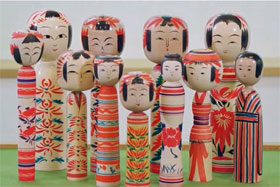 © Web Japan 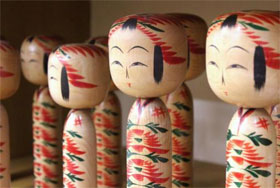 © photoAC 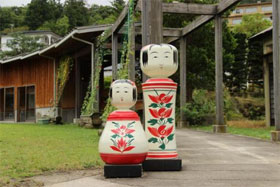 © photoAC 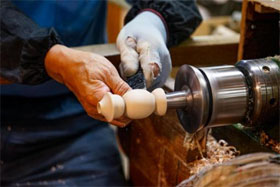 © photoAC 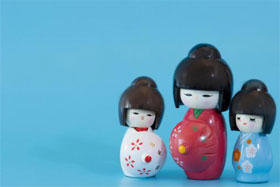 © photoAC |
Resources
|
“Kokeshi – Japanese Wooden Dolls”. 2017. Japan House London. Accessed 22 May. https://www.japanhouselondon.uk/discover/kokeshi/. “Miyagi kokeshi doll”. 2013. KOGEI JAPAN. Accessed 22 May. https://kogeijapan.com/locale/en_US/miyagidentokokeshi/. “Kokeshi Dolls Enjoy Surge of Renewed Interest”. 2020. nippon.com. https://www.nippon.com/en/guide-to-japan/gu900137/kokeshi-dolls-enjoy-surge-of-renewed-interest.html. ”Visit Miyagi”. 2018. Miyagi Prefectural Government. Accessed 22 May. https://visitmiyagi.com/. |
|
Japan Creative Centre 4 Nassim Road, Singapore 258372 +65 6737 0434 / jcc@sn.mofa.go.jp https://www.sg.emb-japan.go.jp/JCC/ Nearest parking at Orchard Hotel & Delphi Orchard |
 |